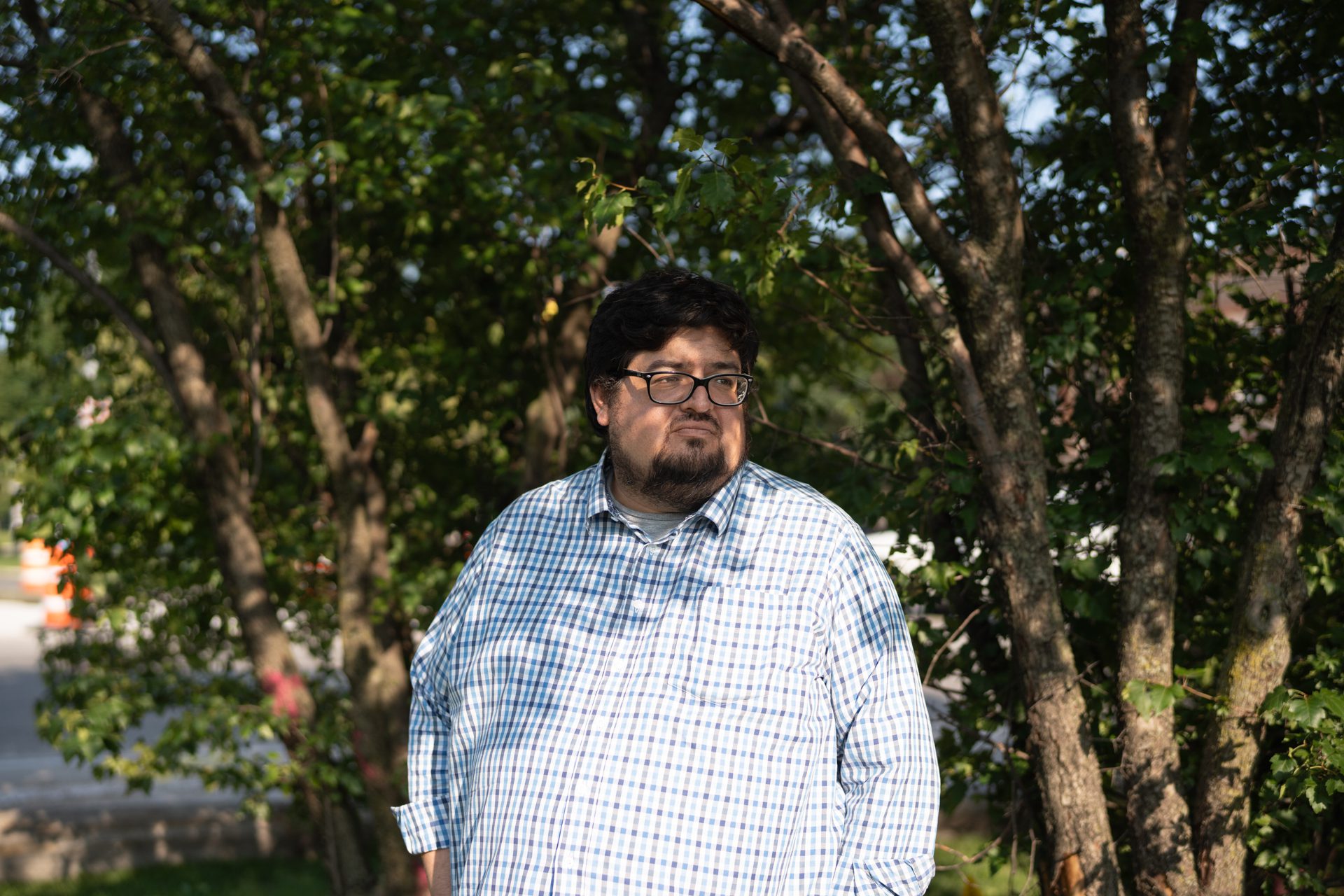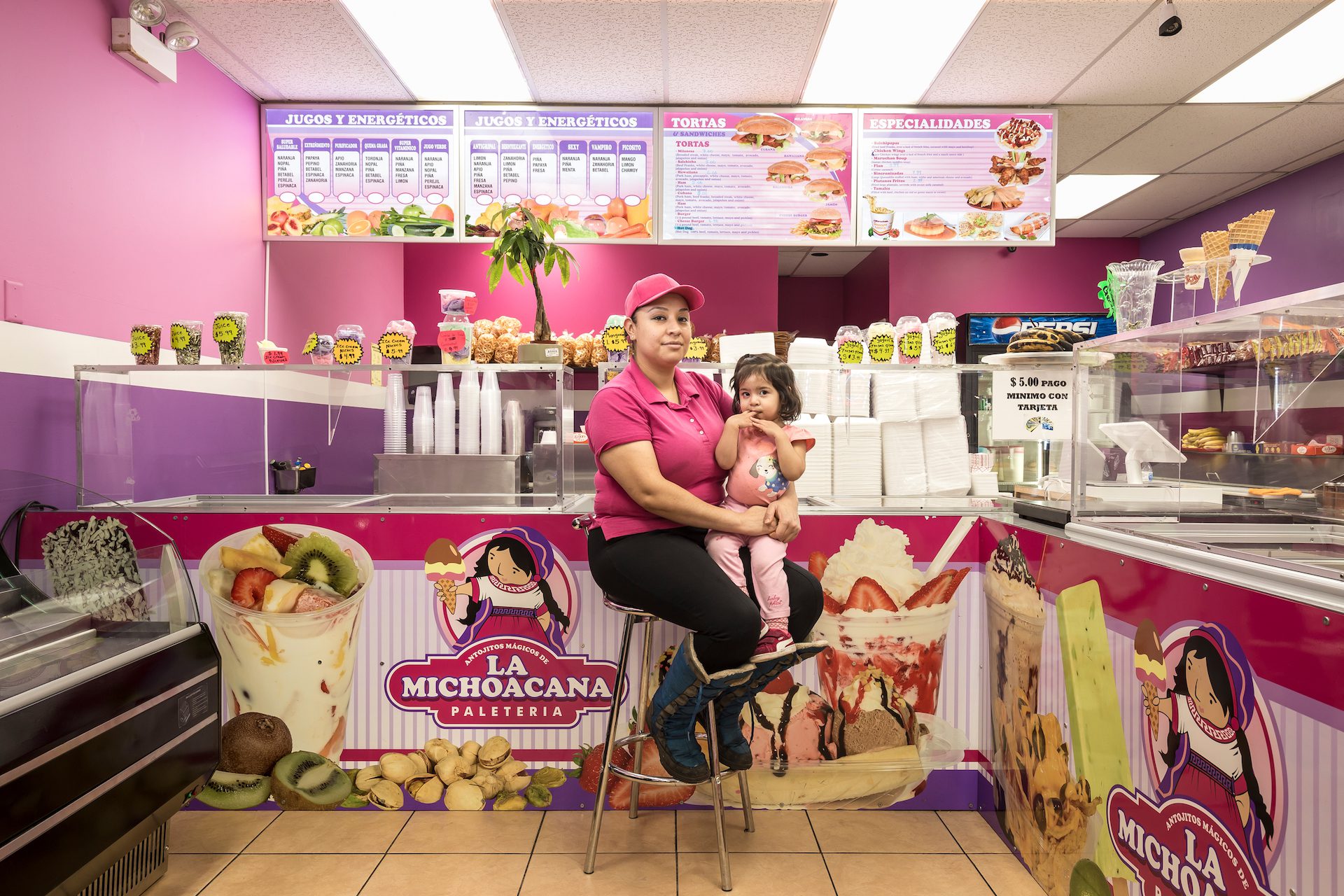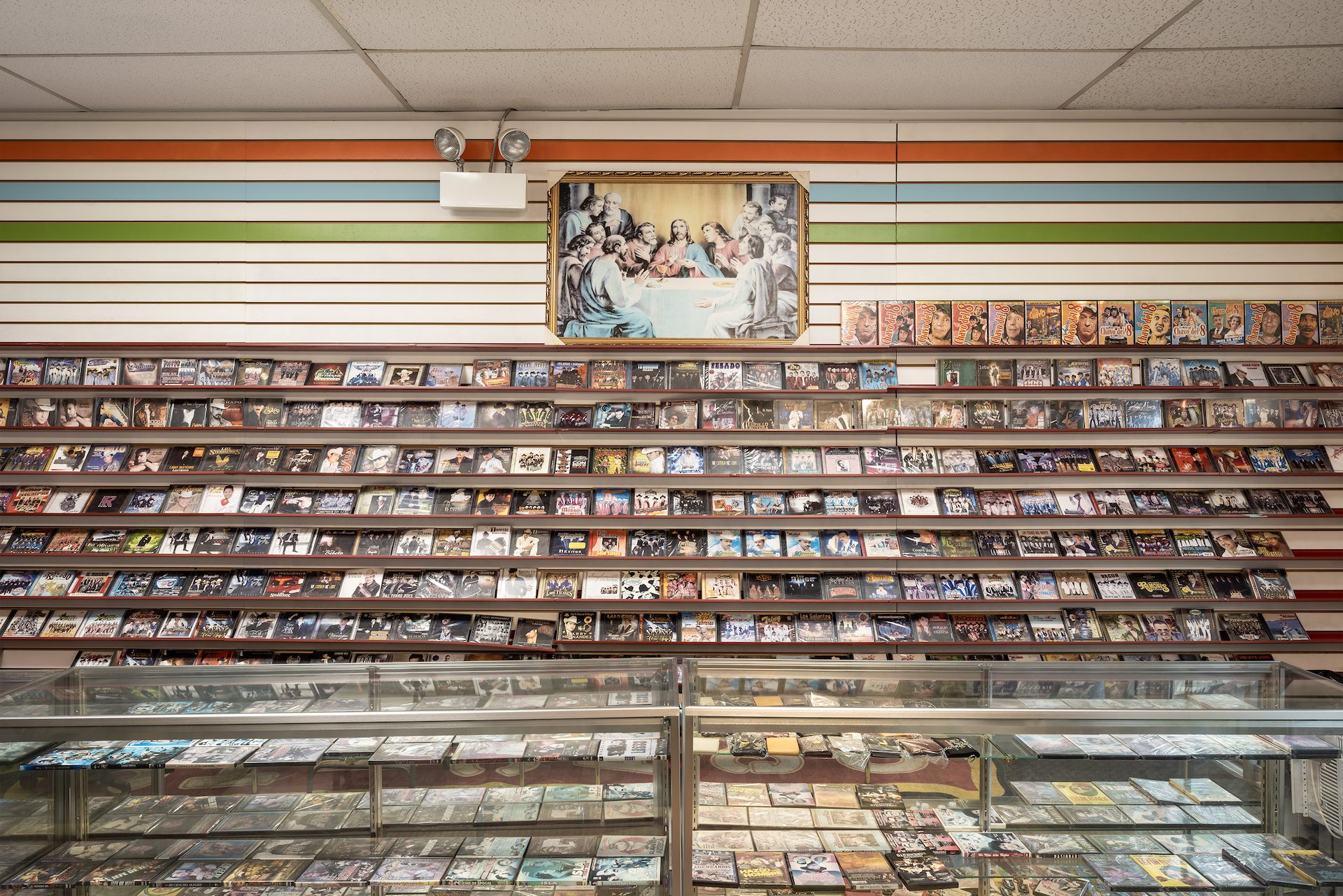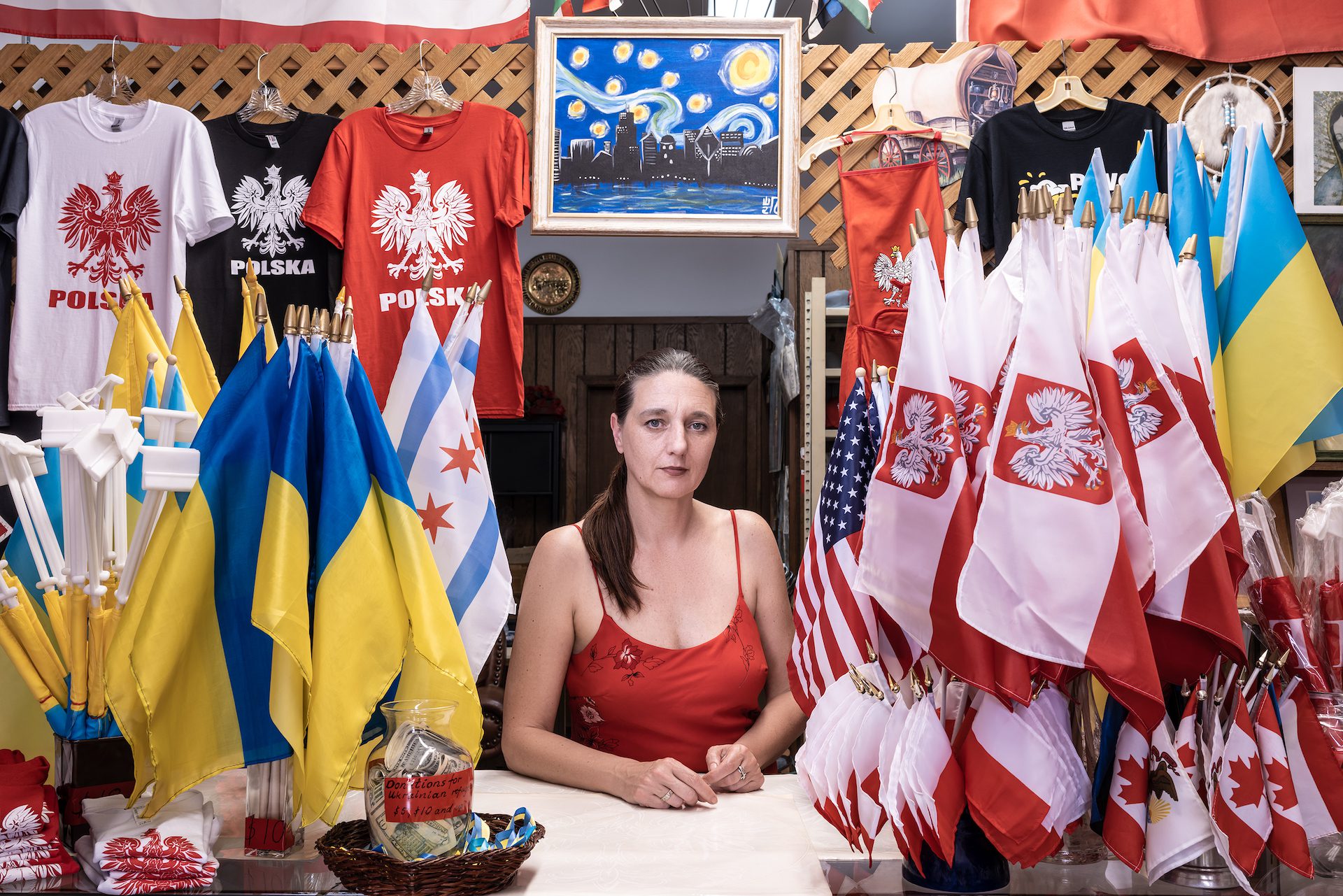 Max Herman/Borderless Magazine
Max Herman/Borderless MagazineJonathan Castillo’s photography breaks stereotypes and honors immigrant-owned businesses in Chicago and nearby suburbs.
When Los Angeles native Jonathan Castillo settled in Chicago about seven years ago, he rode the CTA’s Pink and Brown Line trains, exiting at different stops and exploring a new neighborhood each time. Castillo found himself walking the blocks of Albany Park, Cicero, and Little Village, visiting various small businesses — a tradition that became integral to his experience of getting to know the Chicago area.
News that puts power under the spotlight and communities at the center.
Sign up for our free newsletter and get updates twice a week.
Before coming to Chicago, Castillo spent nearly two years in China working as a freelance photographer. He picked up editorial and corporate gigs that his friends passed his way. During this time, he became increasingly drawn to the owners of small shops in Hong Kong and mainland China. But it wasn’t until arriving in Chicago and starting his Master of Fine Arts in photography at Columbia College that he knew he was onto something with what would become his portrait series “Immigrant Owned.”
“It became kind of clear that many of the neighborhoods I was most drawn to, and the businesses I was photographing were immigrant communities,” he recalls.
Castillo’s meticulously composed photos document dozens of businesses, their owners and employees in the Chicago area. His eye for color and detail and the rapport he builds with these owners have brought the series to life. His work has been featured on the walls of the Chicago Art Department, Comfort Station, and the Chicago Cultural Center. Most recently, his series about Black and Latino small business owners on the South and West sides, “Flags, Food, and Faith,” is temporarily displayed at Midway Airport.
Castillo sat down with Borderless Magazine to discuss his process as a portrait photographer, getting to know Chicago, and his goals with the series “Immigrant Owned.”
The interview has been edited for length and clarity.
When you were initially going into small businesses, what was it like securing access and trust with busy business owners who might distrust media or photography? How did you strike that balance and garner that trust with people?
You have to be OK with a lot of “No’s.” I would typically walk in with my camera in my bag, and introduce myself as a Columbia College student working on a project. I would show them some of my photographs and say, ‘I would love to photograph your store. Would you mind?’
After I narrowed the focus to immigrant-owned businesses, I would tell them about the project and people were like: “Yeah, I’m from Venezuela,” or “I’m from wherever.” We would have a conversation about the history of immigration in their life or their family and how that business came to be. Some people have more conversations, while others were less interested in talking. Some people are like: ‘Yeah, just take the pictures all you want, I’m just going to work.’ They’ll just do their thing, and I’ll just photograph them while they work.
I would photograph the space, and it’s usually no skin off anyone’s back. With the portraits, sometimes people would be willing to let me photograph them right away because they’re not busy. I can usually do my portraits in about 15-20 minutes. I set up my camera. I set up my tripod. I make my composition. I know where I’m going to put my person. I don’t set up a second portrait in another place, walk around, and try to find another location. I’m very intentional, like: “This is where the portrait is going to be,” and I make one shot.
Read More of Our Coverage
Were you doing a lot of pre-visits? And, like you said, you’re asking them about their experience. Is that all done in visits before the actual day of the photography?
It depends; sometimes, I’ll show up and photograph the space, and someone will immediately agree to a portrait because they’ve just got time. Sometimes, they’re interested in what I’m doing, or they don’t seem to be bothered by me being there. Sometimes, I’ll do the interior photos and ask: ‘Hey, if you have time, I’d love to come back and do a portrait when you’re ready.’ Some people want to do their hair or wear different clothes, and we plan the portraits for a different day. Sometimes, it’s two or three visits before a portrait happens, but usually, it’s within the first or second time I’m there.

Do you feel that the wider audience will get a better understanding of the breadth of different immigrant cultures in Chicago or perhaps you can break some stereotypes? Were you thinking about any of that?
I do see my work as political and pro-immigrant. But very subtly, right? It doesn’t matter where you live in this city or this country, you’ve got a shop like this around. Every little town in the middle of nowhere has its one Chinese restaurant, or a Mexican restaurant, or whatever kind of shop — the barber shop that’s run by an immigrant.
Even a lot of people who are anti-immigrant, hyper online type people probably can’t escape the fact that they patronize these kinds of businesses. But there’s probably a disconnect in their minds between the rhetoric and often I think, every day. If the work was very aggressively, pro-immigrant and super obvious and hit you over the head, I think it’s very easy to be dismissive of it. You can get into this thing where it’s like us versus them, left versus right, blue versus red, Democrat, Republican. Instead, I’m hoping to make a project that’s very honorific for the people who start these businesses and operate them and run them.
If people see them, it might even remind them of their own parents’ small business or their grandparents’ business. It’s just a reminder that people have been coming to this country for generations with that specific dream in mind of having their own small business, having that autonomy, creating a better life for their kids—being able to put their kids through college. Or whatever their kind of version of the dream is. My goals are always to be political, but in a subtle way, in a way that’s positive — not combative so that the widest possible audience could potentially enjoy it and connect with it.
I don’t know if it will sway anyone, but it has a better chance of swaying people. Art, in and of itself, lays the groundwork for conversations. If we’re talking, then we have hope. But if we’re not talking and we’re fighting, we have words or we have violence. It’s a visual communication. It’s another way to say what I think.
Are there specific questions or takeaways you hope your audience will consider after seeing your work?
I thought I was photographing something going away and dying when I started this project. That all these small businesses are subsumed by Amazon. But the more I do this, the more I don’t believe that anymore. You know they come in cycles. Small businesses grow into this kind of corporate model and become a much bigger thing, or they become successful enough that it gets passed on from generation to generation. For others, it served its purpose of getting their kids through college — and mom and dad can retire in the suburbs and don’t need that business anymore. In other instances, the community it previously served has moved out, such as Belmont Cragin. It used to be a Polish community, but now, it’s a Latino community. These things kind of just go in waves.
But as far as takeaways, I want people to be curious about and patronize these kinds of shops and appreciate them, whether they’re these specific ones or ones in their own neighborhood. And not necessarily immigrant-owned shops but all small businesses in general. My other project “Flags, Food, and Faith” is about Black and Latino businesses here in the South and West sides.

Will you continue with Immigrant Owned in Chicago, or will you expand to other locations?
I’ll keep doing it while I’m here. I plan to stay in Chicago, write grant applications to expand the project to other parts of the country, and hit some other big cities. I’d like to go back to LA and do it. I might also go to New York, but I’ll also hit some rural parts of the country—places off the beaten path.
Chicago has been great to me, and the project is doing really well here. It’s been very celebrated here. “Flags, Food, and Faith” is going into Midway Airport and “Immigrant Owned” is going into the O’Hare Airport.
The reason it’s going into the airport is because it’s both ‘Welcome to Chicago’ and, for many people, a kind of ‘Welcome to America’ project. It’s the first thing they’ll see once they get through customs at the airport. Chicago is almost like a surrogate for the country in its diversity in all the different neighborhoods. What’s great about the project is it would very easily fit into a larger national project. It’s just a funds thing – funds and time.
Since you mentioned the airport, especially the O’Hare permanent exhibit, you’re really tapping into the potential to reach a truly international audience. Can you talk a little bit about that? And is this the ultimate audience you had in mind for this project?
I never imagined in my wildest dreams that this would be at the airport. During the pandemic, I was added to the city’s pre-qualified list for public art at the Department of Cultural Affairs and Special Events. After getting on the list, I was a featured artist, which means I can do public art projects with the city. I made some COVID-19 PSA billboards, which were really cool.
After that, I was then added to another list to be considered for projects at the airport. One day, they told me I was selected as a finalist for this airport commission and asked for a budget and a proposal. I wrote it with the impression I wouldn’t get it because of the four finalists — at least two of them were very accomplished artists. I had never done anything of this scale.
I believe I got selected because I’m photographing a very diverse group of people — it’s welcome to Chicago, welcome to America — all those things. I think it just fits really well into the space. I never imagined in my wildest dreams that I would be doing all of these public art projects. I’ve now done several really large photography projects.
The city of Chicago has been really good to me in that way. I’m very grateful. I had no clue when I started this in grad school that this is what this is going to become.


